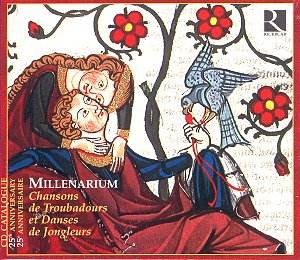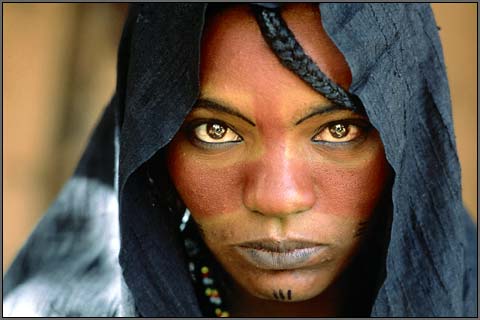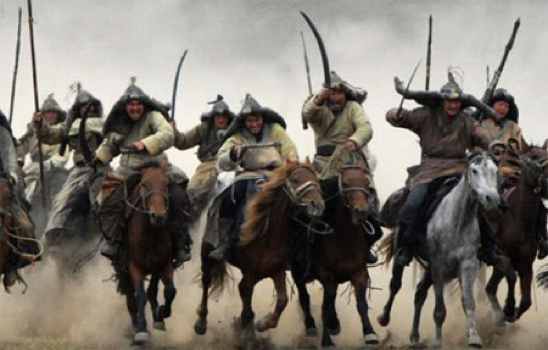I am sorry for the necro, but I've found this thread while I was googling something else, and I feel a strong urge to reply and set some things straight.
Because, if something annoys me, it's when someone sees a few superficial similarities between one or two things in a very large literary project and some real world historical event, and then tries to interpret the whole thing along these lines. Especially when that someone doesn't even have a complete knowledge of it - I am sorry, but the HBO's GoT captures about one fifth of what is in the book, and it's just the first book, out of five. Attempting a serious analysis of it like that would be as foolish as if I tried to interpret Shakespeare's plays after watching
Shakespeare in Love.
Martin's world is undoubtedly inspired by (mostly Western/European) history. However, Martin takes from many sources and many different periods and then blends it with fantasy elements to create his own unique fictional world. You can thus find many parallels with real world historical events, but that hardly means the whole ASoIaF (A Song of Ice and Fire, for the uninitiated) is just an allegory of one event or one period of history of one place, however interesting it might be.
So...
I must admit that i am a really big fan of HBO's Game of Thrones series. The author of the fantasy series (which i have never read as i am not a big fan of literary fantasy) upon which the HBO series is based admits that the plot line is based some what on the history of Medieval England (Tudor England I think). And a number of blogs and articles related to the series keep highlighting this similarity. The most obvious similarity is the fantasy world created by Tolkein in his Ring fantasies. In any event the series gives the impression of an imagination which sprouts from a very European source.
First, there is nothing that needs to be discovered here. Martin himself said many times that a powerful inspiration for the story was the War of the Roses. Second, you cannot hope to understand the series properly if you didn't read the books. Third, although Martin loves Tolkien's books, it's as far from the Lord of the Rings as fantasy can get. Tolkien gives you an idealized image of medieval life, characters who are actually rather flat, and a story of good and evil fighting for power in the world. Martin rubs your nose in the "real" medieval life (which was often brutal and short), his characters' morals are usually very ambiguous (what he did with Jaime the Kingslayer deserves praise), and the story in a large part revolves around noble houses' intrigues and fighting wars for power - there's no "lawful good vs lawful evil" kind of thing going on at all. I laughed when I read on a blog that Martin breaks a rule of Tolkien-ish fantasy - people who look beautiful can't be bad, right?!

However a more than cursory glance at the geoplolitics of this fantasy drama reveals how much this seemingly European World is based on a history not quite pristinely European. The constant reference to the Narrow seas which separate the Nomadic, Barbaric and horse riding warriors known as the Dothraki, reminds one of the Narrow sea separating 'barbaric Africa' from Spain; and similarly the Dothraki although admitted by the authour as inspired by the nomadic culture of the Mongols and certain Native American Tribes are nonetheless reminiscent of ofcouse the 'Barbaric' moors---The Almorhavid and Almohades, among others who preceded them.
The Narrow Sea is very clearly this world's Mediterannean, with the Free Cities situated along the coast of the Eastern continent (Essos) modelled after the trading cities/merchant republics that existed in the Mediterranean, with a dose of Ancient Greece/Phoinicia/Carthage to spice them up. Take Braavos, the most powerful of the free cities - a naval power, a major trading city that is built in a lagoon to protect it against enemies... gosh, what could it be? Yes, the most obvious answer is the correct one - Braavos is mainly inspired by Venice, while the Titan statue that stands straddled over the entrance to the lagoon is probably an allusion to the Colossus of Rhodes.
Essos in general is an analogue of Asia - a large continent that stretches far to the East, largely unknown to most inhabitants of Westeros, just as the true shape and political make-up of Asia was unknown to late mediaeval Europeans. The Dothraki in the Dothraki Sea mirror the Mongols and other nomadic horsemen who lived in the large stretch of Eurasian steppe that stretched from present-day Hungary to Manchuria.
Westeros itself is curiously shaped, but culturally it's clearly modelled after mediaeval Western Europe, Britain in particular when we consider its history. First settled by men from across the Narrow Sea who displaced the "children of the forest" and their stone age technology mixed with magic, it was then invaded by the Andals who conquered the First Men and carved out their own kingdoms (bringing Iron Age technology and a new religion with them). This is probably inspired by the invasions Britain suffered repeatedly in its ancient history - but the order isn't chronological, it's not as if Martin is simply recreating the British history in a fantasy form. BTW, the Wall itself has clearly been inspired by Hadrian's Wall, as a short glance at the map will tell you.
Africa is 'represented' only scantly, by the Summer Isles and the continent of Sothoryos (covered by jungles, largely unexplored and unmapped) whose inhabitants have a skin the colour of ebony.
Even the hapless fate of the Targaryen family is reminescent of the Umayyads (the first Caliphate) massacred by the Abassids. Here is Stanley Poole describing the survival of Abd al Rahman, the half Berber prince in The Story of The Moors in Spain:
It could be an inspiration, but I wouldn't stretch it. Targaryen dynasty was established in Westeros after the Doom of Valyria, which from what we know about it is this world's version of the Roman Empire, a large civilization with 'surprisingly' Latin-sounding language that has left a lasting cultural legacy around the known world, although it was itself destroyed later (by forces unknown). After the demise of Valyria, one of its surviving noble houses - the Targaryens - led a war of conquest in Westeros, and managed to unite most of it (except Dorne) under their rule. This is inspired by both the Roman conquest of Britain, but more importantly by the Norman conquest of England a thousand years later. The first king of the "Seven kingdoms" was Aegon the Conqueror, which is the same epithet we now use for the guy who in his time was called William "the Bastard". Again, the allusion couldn't be made more obvious.
Although the noble qualities listed by the end of extract belong to the Lady Targaryen as oppossd to her brother, the similarities are apparent. Abd al Rahman goes on to cross the narrow seas and conquer Spain, using his his royal blood as legitimacy; the Tagaryens whose entire royal line has been massacred save the two, plan on doing the same.
Of course, the Targaryens plan to do that after they've been exiled from what you think is the analogue of Spain, which in itself should be enough for you to abandon this theory.
And ofcourse there is the Ecoculture of these seven Kingdoms--The most convincincing evidence. The North is portrayed as backward, unelightended , poverty stricken and winter-bound, whereas the south is the land of warmth and sun, and culture and wealth. This again is a reflection of the contrast between Andalusia Spain, conqured and civilized by the ironically 'Barbaric Moors' and the rest of medieval Europe. Here is Stanley poole again:
Absolutely not. The North is not described in any such way, and in any case the North is a part of the Seven kingdoms too (the last independent king in the North bent his knee before Aegon the Conqueror when he realized he stood no chance against his armies and dragons). The North is poorer than some of the more southern parts of Westeros simply because it is colder and thus less fertile compared to the Reach or the Riverlands. In my opinion, the North and its culture is largely inspired by Scotland/Northern England and the role it played in English history.
But one tires of tring to find African culture and history in the subtext or subconscious of very outwardly European shows. In this series for instance there is hardly any black person in the darn show. The few blacks are all in the background and surprise surprise are the barbarian women of the Dothraki, who eat the heart of horses raw, whose language has no word for thank you. When are we going to see a historic TV drama based on an African history and culture unashamed to show its 'black' face. A show like Shaka starring the inimitable Henry Cele!
And of course the inevitable complaint about the supposed racism of this fantasy world

I am really tired of such comments, especially if uttered by someone who doesn't even know the books and speaks of the HBO show as if it was not based on them. I suppose there are people who wouldn't stop at criticizing LotR films for not making Aragorn black for the sake of political correctness

Since Westeros is a functional analogue of Western Europe, why should there be any black people around? Were there many black people in medieval France, Germany, or England? No. There were probably none, except an occasional slave brought from overseas as a curiosity. In the books, the only black people in Westeros I know of are Jalabhar Xho, an exile prince from the Summer Isles who is a courtier in the royal court, and Chataya/Alayaya, whores in one of the luxurious brothels in King's Landing. Black-skinned people from the Summer Isles trade with Westeros, but that's about it.
There is no "shame in showing an African face" because there are practically no African faces in the setting. Complaining about that is as pointless as complaining that there are no Eskimos in Indonesia and no Aboriginals in the Arctic.

.jpg)








 I am really tired of such comments, especially if uttered by someone who doesn't even know the books and speaks of the HBO show as if it was not based on them. I suppose there are people who wouldn't stop at criticizing LotR films for not making Aragorn black for the sake of political correctness
I am really tired of such comments, especially if uttered by someone who doesn't even know the books and speaks of the HBO show as if it was not based on them. I suppose there are people who wouldn't stop at criticizing LotR films for not making Aragorn black for the sake of political correctness 